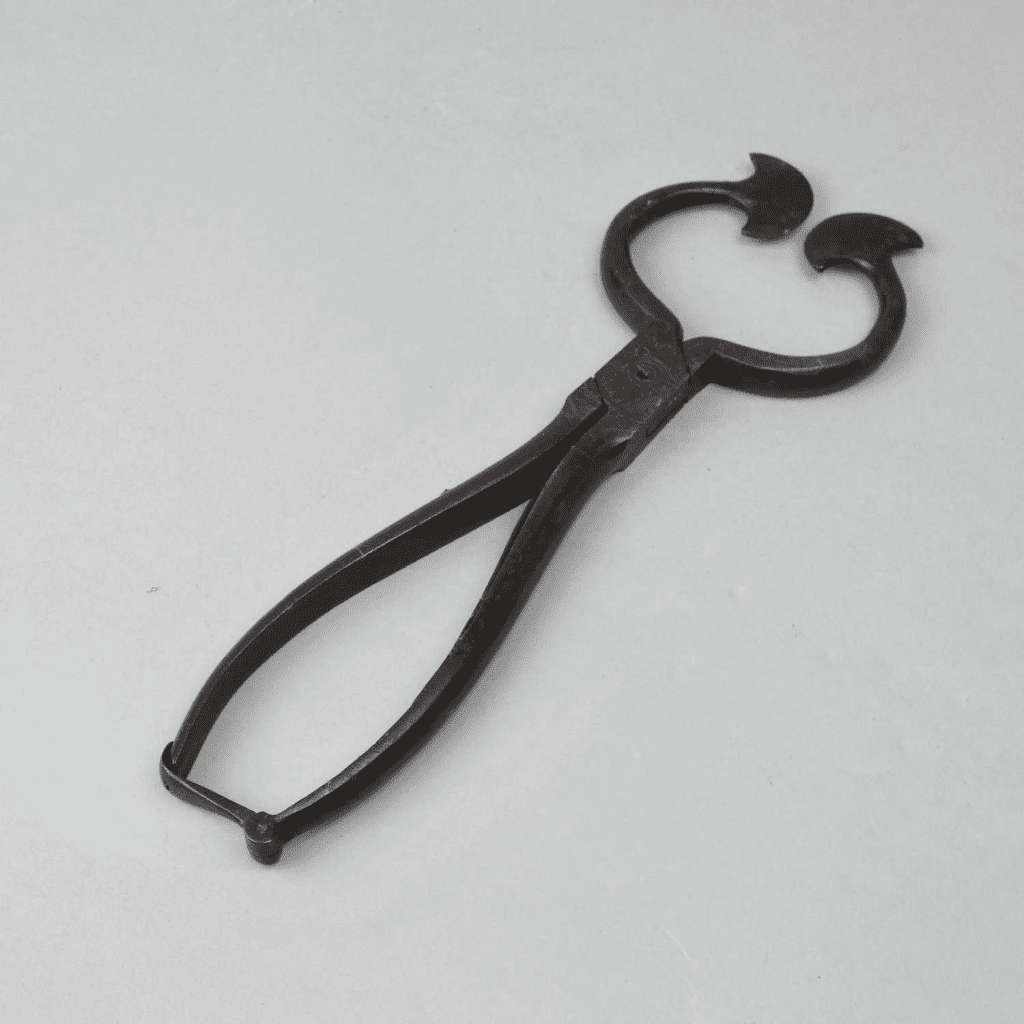Sugar, once considered a luxury reserved for the wealthy, played a significant role in shaping culinary traditions over the centuries. Before the convenience of granulated sugar became widespread, people had to manage dense sugar loaves, which were difficult to use without the right tools. Enter iron sugar nippers, an essential household tool for breaking down these hefty sugar cones into smaller, usable chunks. Let’s delve into the history, usage, and legacy of this fascinating vintage kitchen tool.

The Origins of Iron Sugar Nippers: A 17th Century Necessity
During the 17th and 18th centuries, sugar was not the commonplace staple we know today. It was an expensive, luxurious commodity often sold in large, solid loaves or cones. These sugar loaves were so dense and hard that they required special tools to break them into manageable pieces for use in cooking or sweetening drinks.
Iron sugar nippers were developed to address this challenge. Crafted from sturdy cast iron, these tools featured long handles for leverage and sharp, scissor-like blades designed to grip and snap chunks of sugar from the solid loaf. The size and design of sugar nippers varied, from simple, functional models to more ornate versions found in wealthier households.
Wealthy families often owned beautifully crafted sugar nippers, designed not only for practicality but also as a symbol of status. Meanwhile, in more modest homes, simpler, unadorned versions of the nippers were used, highlighting the tool’s widespread utility across all social classes.
How Sugar Nippers Were Used
The process of using sugar nippers was straightforward but required a bit of strength. The user would place the nippers’ blades around the section of the sugar loaf they wished to break off, using the long handles to apply pressure and “nip” a piece of sugar free. The force needed to break the dense sugar meant that the design of the nippers had to be both strong and precise.
Breaking Down Sugar for Daily Use
Once a chunk of sugar was removed, it could be crushed or further broken down to sweeten tea, coffee, or other foods. In a time when sugar was used sparingly due to its cost, sugar nippers became a central tool in kitchens, helping families carefully manage their precious supply.
Industrial and Commercial Use
Sugar nippers weren’t just a household tool. In larger establishments such as bakeries or apothecaries, they played a critical role. Confectioners and bakers used them to prepare sugar for their recipes, while apothecaries incorporated sugar into medicinal preparations to improve the taste of various remedies. The versatility of sugar nippers made them essential in any place where sugar was processed or used.
The Decline of Sugar Nippers and the Rise of Granulated Sugar
As the 19th century unfolded, sugar production became more industrialized, and the price of sugar dropped significantly. With the development of granulated sugar, which could be easily measured and used without the need for tools like nippers, the demand for sugar loaves—and by extension, sugar nippers—began to fade.
By the mid-19th century, sugar nippers were gradually replaced by more convenient methods of sugar consumption, such as pre-packaged granulated sugar or sugar cubes. These new forms of sugar didn’t require any special tools, making iron sugar nippers less essential in everyday life.
The Legacy of Iron Sugar Nippers: A Collector’s Delight
Though their practical use faded, iron sugar nippers left behind a fascinating historical legacy. Today, they are considered prized collectibles for enthusiasts of vintage kitchen tools and historical artifacts. Their craftsmanship and durability have turned them into sought-after items for collectors, who admire both their aesthetic appeal and the glimpse they offer into a time when sugar was a rare delicacy.

Many vintage iron sugar nippers feature intricate designs, particularly the ornate versions that were once found in upper-class homes. These details reflect the care and craftsmanship that went into making even the most utilitarian of objects during that era.
Culinary History Preserved in Museums and Collections
Iron sugar nippers are often displayed in museums and private collections dedicated to culinary history, serving as a tangible reminder of how food preparation has evolved. They represent an era when the simplest tools were carefully designed for both function and form, blending durability with an appreciation for style.
Modern interest in vintage kitchen tools has sparked a renewed appreciation for these iron nippers, not just as functional objects, but as relics of a time when sugar was a luxury that required careful management. This reverence for historical kitchenware has helped preserve the memory of sugar nippers and their role in shaping culinary traditions.
Why Iron Sugar Nippers Endure as a Symbol of Culinary Craftsmanship
The story of iron sugar nippers is a reflection of how everyday life has changed over the centuries. What was once a necessity in households across Europe and beyond is now a collectible, symbolizing the evolution of sugar production and consumption. These tools tell the story of a time when sugar was valued as a rare delicacy, and the process of breaking it down was as much a ritual as it was a practical task.

The durability of iron sugar nippers, combined with their intricate designs, highlights a period when even utilitarian objects were crafted to last. They serve as a reminder of the value once placed on items that today may seem mundane—like sugar itself. In this way, sugar nippers embody the rich history of food preparation and the care that went into the tools of that era.
Conclusion: The Enduring Appeal of Iron Sugar Nippers
Iron sugar nippers may have been phased out by the convenience of modern granulated sugar, but their legacy lives on. As collectibles and historical artifacts, they offer a unique glimpse into the past, reminding us of a time when sugar was an expensive commodity, and even the most basic kitchen tools were crafted with care and precision.
From their role in kitchens of the 17th and 18th centuries to their place in today’s museums and private collections, iron sugar nippers continue to captivate those who appreciate the intersection of history, craftsmanship, and culinary tradition. Whether admired for their functionality or their artistry, these vintage tools are a lasting symbol of a bygone era in food history.


